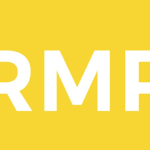Course Overview:
This course on “Advanced Systems for Planning, Monitoring, and Evaluating Maintenance and Preventive Maintenance” focuses on modern approaches to maintenance management by integrating Kaizen and Lean principles with artificial intelligence techniques. The course aims to enhance the efficiency and effectiveness of maintenance operations through improved planning, monitoring, and evaluation, ultimately reducing costs and increasing productivity.
Course Objectives:
- Understand the principles of Kaizen and Lean and how to apply them in maintenance operations.
- Learn how to use artificial intelligence to enhance the planning, monitoring, and evaluation of maintenance activities.
- Develop effective strategies for preventive and predictive maintenance.
- Enhance the ability to analyze data and make evidence-based decisions.
- Improve the efficiency and effectiveness of maintenance management within organizations.
Training Content:
- Introduction to Kaizen and Lean principles in maintenance management.
- Effective planning strategies for maintenance operations.
- Monitoring and evaluation techniques for maintenance performance.
- Applications of artificial intelligence in improving maintenance processes.
- Developing a data-driven preventive maintenance system.
- Data analysis and using AI tools for decision-making.
- Real-world case studies on the application of Kaizen and Lean in maintenance.
- Practical workshops to apply the concepts learned.
Target Audience:
This course is aimed at:
- Maintenance and production engineers.
- Maintenance managers and supervisors.
- Quality management and continuous improvement specialists.
- Engineering students and those in related fields.
- Anyone interested in enhancing their skills in maintenance management and effective planning.
This course will equip participants with the knowledge and skills needed to improve maintenance efficiency and increase the return on investment in equipment and resources.






